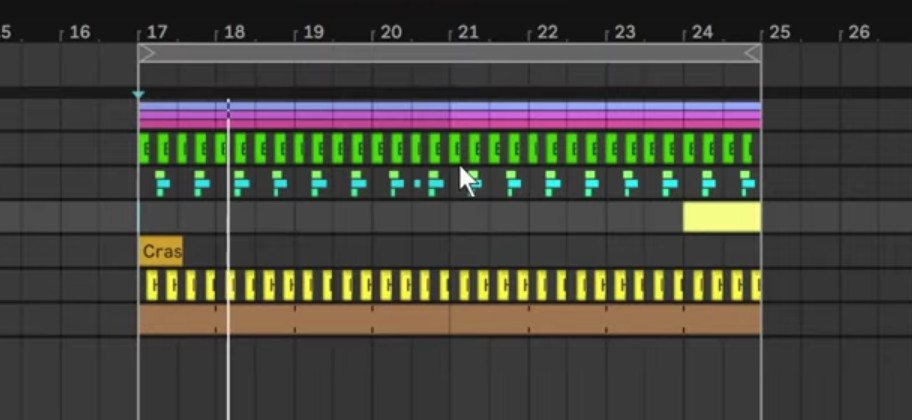Hi, I’m Bound to Divide with PML and in the tutorial above we made this classic house beat:
In this article, you’ll find a summary of all of the elements we’ve created in the tutorial. Let’s get started!

1. Classic House Grand Piano
The first step was creating a chord progression with the stock Ableton Grand Piano.
I started from drawing in the bass notes and then added more notes on top to create complete chords.
We work in A Minor here for ease - we’re using only white notes.
As for the progression, we are playing A, D, E and F (with a brief G at the end) - so we have an “ascending” progression.
Once we had full sounding chords, it was time to add rhythm - and I added the typical “dotted” rhythm for a house track.
We’ve copied over the rhythm over the entire clip, and this is what it sounds like:

Then we’ve modified the sound a bit for a “harder” feel - with the grand piano’s built in controls, Hybrid Reverb and an EQ Eight.

2. Operator Saw Octave Bass
With the bass we’re playing the exact same bass notes as the chord progression - but we’re duplicating them in an octave.
We’ve chosen Operator for this basic sound, and a “SwD” oscillator with EQ Eight adding a lowpass filter at around 180 Hz.

3. Ableton Strings
A typical element of classic house tracks are long string notes sitting on top of a track.
The preset we’ve chosen here is “Second Stellar Strings” from Instrument Rack.
The strings sound so good initially that we didn’t need to add any more effects!

4. Kick
The kick is a very simple element - 4 to the floor type of pattern.
I’m using one of my original kick drums for this one, but feel free to check our any of the PML packs for great selection of kick drums for classic house.
No processing required for this kick.

5. Sidechain
Once we have the kick, we can add sidechain compression to the melodic elements.
I’m grouping the Piano, Strings and Bass and putting a “Compressor” on the group.
After choosing the Sidechain mode and selecting the kick track, all that needs to be done is lowering the Threshold.

6. Claps & Snare (808/909)
Next up, we’re adding an 808 Clap, 909 Clap and the 909 Snare.

7. Open Hat, Closed Hat
Moving on from there, I added 909 hats - the open hat playing in the offbeat position, and closed hats playing 16th notes.

8. Fills with Claps
At this point, we’re left with final touches - we can repeat some claps to add a fill-type element to a fragment of the beat.

9. Snare Fill
I also added a new track just to create a 909 snare fill at the end of the 16-bar loop:

10. Crash
A beat like this wouldn’t be complete without a crash after the new snare fill!
11. Vocal
To finish it off, we can add a vocal.
First, I added Delay and Reverb to process it nicely.
I’m also slowly fading it in with an Auto Filter:

That’s our complete beat!
I hope you enjoyed the tutorial. Feel free to check out our music production courses!
Good luck with your classic house production.
- Julian
See Also:
How to Make Classic Kavinsky "Nightcall" Vocoder Sound from Drive Soundtrack
Ableton Analog Synth: Full Guide for Beginners
How to Make Organic House with Ableton Live and Built In Plugins

